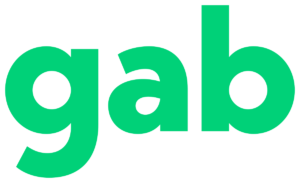The True Beauty of the Magdalene
Mary Magdalene has long been a favored subject for artists, and a particularly spectacular example is seen in The Penitent Magdalene of the Florentine master Carlo Dolci (1616-1687). The Magdalene was a subject that Dolci frequently revisited, but this version is notable for the realism and raw emotion that suffuses the depiction: her reddened and watery eyes, the delicate clasp of her hands, and the inclination of her head.
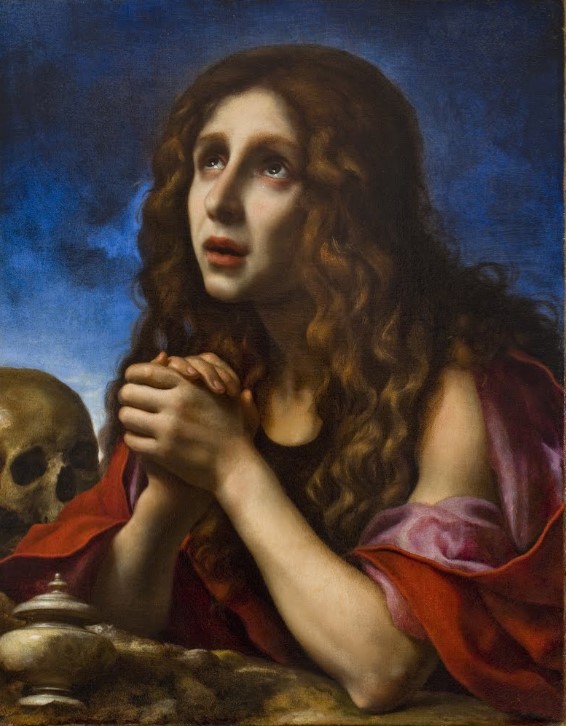
Dolci was a sensitive and intense perfectionist who spent inordinate amounts of time on details, and he once fell into a depression when he witnessed another painter work much more quickly than he did. He was, however, an extraordinarily devout man and quite deliberate in making his art an act of devotion. A contemporary said of him: ““it was difficult to tell whether he was more excellent in the art of painting … or in living a good life”, and his spiritual adviser remarked that his conscience was displayed in his brush.
So many treatments of the Magdalene tend toward the markedly unpenitential or even gratuitously immodest–but Dolci’s is a fundamentally religious work from start to finish.
And indeed, what he achieved is a masterpiece of devotional symbolism: a little glimpse of how incomparably beautiful our contrition looks in the eyes of Almighty God.
July 22, 2020
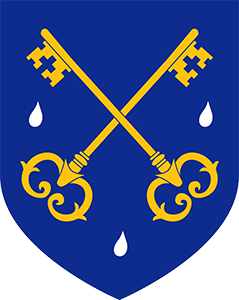
Annual Appeal: The Tower Must Not Fall
“The world changes, and all that once was strong now proves unsure. How shall any tower withstand such numbers and such reckless hate?”
-The Two Towers, J.R.R. Tolkien
Lately we seem to be watching the news with ever greater alarm, bombarded by more and more outrageous images, radical revolutions, and videos of pure inhumanity that chillingly resemble Thomas Cole’s 1836 painting The Course of Empire: Destruction.
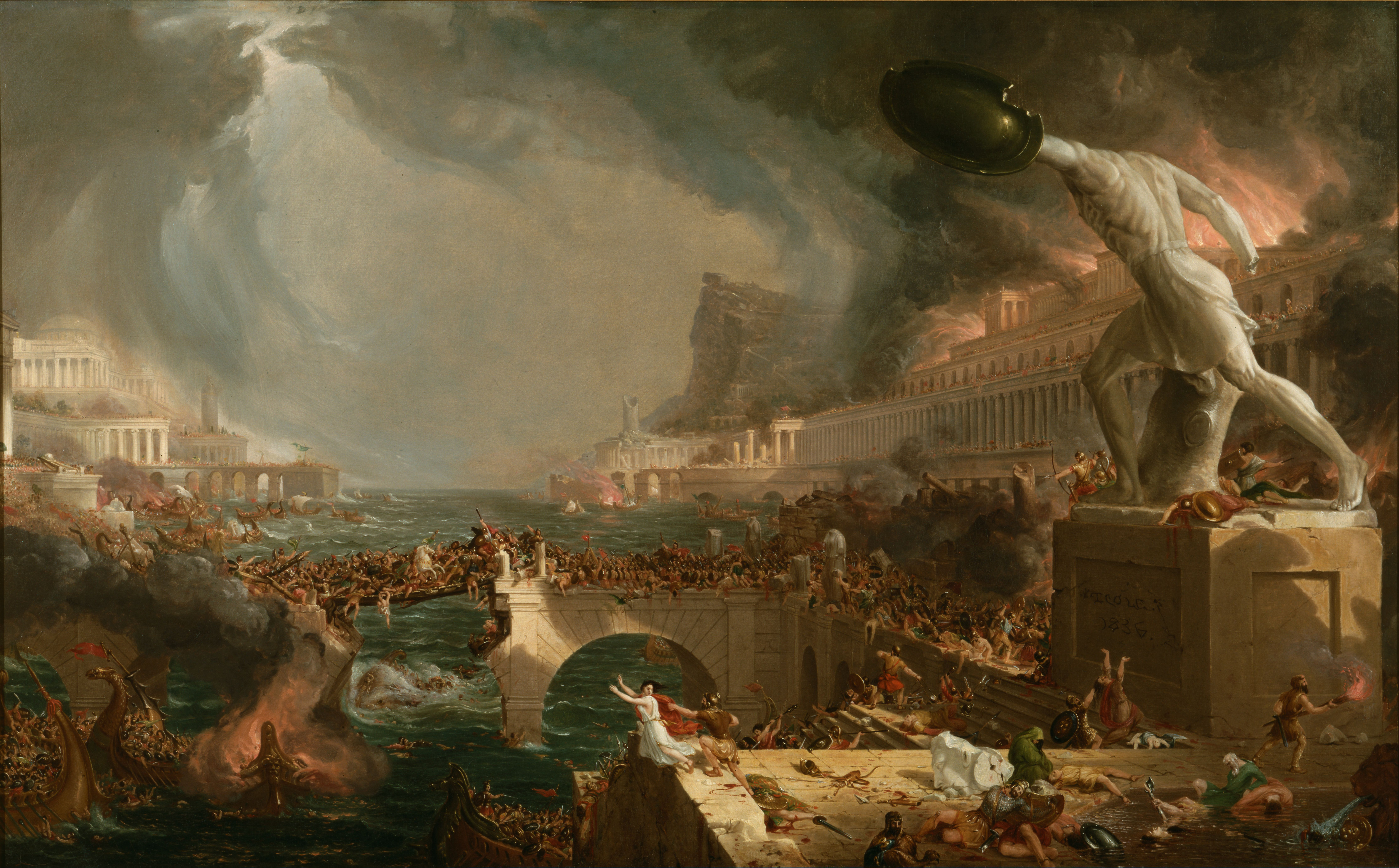
In response to the madness around us, we may be internally despairing, or raging, or avoiding it all. We may cancel or boycott companies that undermine our values. We may empty the store shelves out of determination or defiance. And starved for justice and truth, we may donate to firebrand commentators or channels who “tell it like it is.”
Those actions certainly have their place, but as Catholics, our eyes are always, always fixed on Christ first and last. And this applies not only in the battles in the public square but also in the battles that rage in our very hearts.
Because we know, as few others seem to, that it is the same battle.
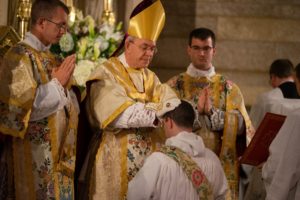 And under these odds, how could we poor sinners hope to prevail over the Enemy without the sacraments? Without Holy Communion to strengthen us, Confession to cleanse us? Without hands consecrated in Holy Orders? Without the graces and fruits of Matrimony?
And under these odds, how could we poor sinners hope to prevail over the Enemy without the sacraments? Without Holy Communion to strengthen us, Confession to cleanse us? Without hands consecrated in Holy Orders? Without the graces and fruits of Matrimony?
This is not a time to run from a fight.
It is a time to marshal our resources, to be prudent about where we spend our money and where we invest our time, and to not allow the headlines to succeed in distracting us from what is truly important.
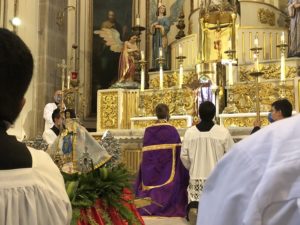 The Priestly Fraternity of St. Peter asks for your support in our Annual Appeal—our most important fundraiser for helping us train more priests to say the Traditional Latin Mass. More priests mean more sacraments, more graces, more relief for those suffering and burdened by sin, more prayer to fortify the Church militant during its trials, and more voices to speak in defense of God’s eternal law over the fleeting dictates of men.
The Priestly Fraternity of St. Peter asks for your support in our Annual Appeal—our most important fundraiser for helping us train more priests to say the Traditional Latin Mass. More priests mean more sacraments, more graces, more relief for those suffering and burdened by sin, more prayer to fortify the Church militant during its trials, and more voices to speak in defense of God’s eternal law over the fleeting dictates of men.
We stand unapologetically for Holy Mother Church. We stand for the Faith and the Sacred Liturgy of our Fathers—unadulterated, unchanging, and unswayed from its divinely given mission by any civil power or revolutionary threat.
 If you stand with us, we invite you to help us in this spiritual battle, to pray for our priests and give us the tools we need to keep the glorious tower of Catholic tradition intact as the refuge of the faithful and as an unconquerable beacon to the rest of humanity, shining the blazing light of Christ into an ever-darkening world.
If you stand with us, we invite you to help us in this spiritual battle, to pray for our priests and give us the tools we need to keep the glorious tower of Catholic tradition intact as the refuge of the faithful and as an unconquerable beacon to the rest of humanity, shining the blazing light of Christ into an ever-darkening world.
July 21, 2020

An Alter Christus upon the Highway
A priest is called to be an alter Christus—an “other Christ.” And like the Master he follows, most of the time he serves the Church in the hidden, quiet way of the soul. Once in a while, however, it is God’s will that His priest serve in a very visible, even extraordinary fashion—even without the priest knowing it.
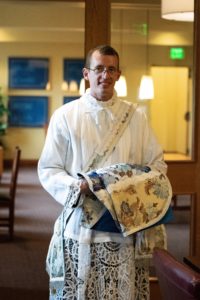 On July 8, 2020, as Fr. John Killackey was returning to the FSSP apostolate in Harrisburg through heavy rain and low visibility, he saw an accident through the mist that must have happened only moments before. Pulling over and seeing the extent of the wreckage, he grabbed his Oil of the Sick and went to assist. The witnesses led Fr. Killackey to one the victims of the crash, and he administered conditional Last Rites.
On July 8, 2020, as Fr. John Killackey was returning to the FSSP apostolate in Harrisburg through heavy rain and low visibility, he saw an accident through the mist that must have happened only moments before. Pulling over and seeing the extent of the wreckage, he grabbed his Oil of the Sick and went to assist. The witnesses led Fr. Killackey to one the victims of the crash, and he administered conditional Last Rites.
“I was trying to do everything properly, and then get out of the way so that the EMTs, policemen, and firefighters who were arriving could do their good work….It is a moment I will never forget, and we need to pray for all those involved in this accident and their families.”
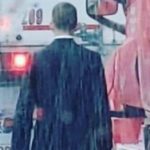 Fr. Killackey then began walking up the highway to see if anyone else needed a priest. As he returned to his car, it started to rain again. It was at that point that someone took a photograph of the priest in cassock, walking in the rain—a photograph that would be widely shared with the story of the accident on social media.
Fr. Killackey then began walking up the highway to see if anyone else needed a priest. As he returned to his car, it started to rain again. It was at that point that someone took a photograph of the priest in cassock, walking in the rain—a photograph that would be widely shared with the story of the accident on social media.
Fr. Killackey insists, however, that he was a vessel of grace who just happened to be there at the time. “So many other priests would have done the exact same thing in that situation. Countless other priests never photographed—and far more deserving of a picture—have been that ‘other Christ’ to people now and through the centuries.” Father was also quick to give credit to the EMTs who “worked very hard that day to rescue people and got drenched to the bone in the rain.”
And while he thinks it was Providential he was there to administer the sacrament, he believes the photograph had nothing to do with him as a person, but his office.
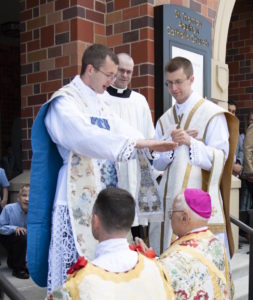 “It was a moment to show what the priesthood is. The priest is one who lives for Christ and is supposed to be ‘another Christ.’ He brings Our Lord to people in the sacraments at all moments of life, but particularly during the difficult moments such as at the end of life when we prepare to meet God. That is why the priest belongs on those scenes so that through him, Our Lord can give grace to souls in those difficult moments.”
“It was a moment to show what the priesthood is. The priest is one who lives for Christ and is supposed to be ‘another Christ.’ He brings Our Lord to people in the sacraments at all moments of life, but particularly during the difficult moments such as at the end of life when we prepare to meet God. That is why the priest belongs on those scenes so that through him, Our Lord can give grace to souls in those difficult moments.”
He also takes the occasion to offer a spiritual reminder on what’s important.
“We never know when Our Lord may call us to Himself, and want to make sure that we keep focused on Him. We all find ourselves getting distracted by the details and cares of this life and it makes it easy to lose sight of the great end for which we are created, the one which will last forever.”
July 20, 2020

FSSP Helps a Bishop Discover the Latin Mass
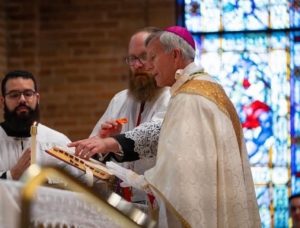 We are pleased to share a second FSSP-related National Catholic Register article this week: A US Bishop Discovers the Traditional Latin Mass.
We are pleased to share a second FSSP-related National Catholic Register article this week: A US Bishop Discovers the Traditional Latin Mass.
Bishop Joseph Strickland of Tyler, Texas was interviewed by the Register and goes into detail about what inspired him to celebrate his first Traditional Latin Mass on June 11, 2020:
Once the motu proprio was established and we were encouraged to make the Latin Mass available, we did this — his secretary was a FSSP [Priestly Fraternity of St. Peter] priest, so I know he was comfortable with the rite. He chose to bring the Fraternity to establish a little community here, and, again, it was very foreign to me. So, when they would approach the cathedral — and this sounds so pejorative now — I found myself often saying, “Oh, here come those people.” Of course I was encouraged to be welcoming and inviting as rector of the cathedral. They later would establish their parish, St. Joseph the Worker, and one of the very first things I did as bishop was to celebrate confirmation for them in Latin. That was a little different for me, celebrating a confirmation outside the Mass — as is done in the traditional rite. They joked my Latin had a Spanish accent!
What changed? What prompted you to learn the extraordinary form?
I’ve been bishop seven and a half years, and we do have priests and seminarians who have expressed interest in the extraordinary form, along with families — young families — participating, going to the Fraternity parishes. More and more, I found people expressing their desires to me to permit the Latin Mass — and, of course, I did, following the motu proprio. I found myself, more and more, becoming aware of the Latin Mass and the draw of the people to it, that it wasn’t this antiquated, negative thing that needed to stay buried.
His Excellency goes on to list some of the resources that helped him learn the traditional Mass, including the FSSP’s instructional YouTube videos.
He also shared a wonderfully emotional moment that happened to him during the Mass:
Just the beauty of the corporal and how the Host and the chalice are treated — I have to say [long pause, filled with emotion] I could hardly say the words of consecration because I became so filled with emotion, so deeply struck by those words. Thank God we only must whisper them in this rite, because I am not sure I would have been able to speak above that whisper, so struck I was at the profundity. It was the first time in my life that I had ever said those words in Latin, and I could hardly get them out. It’s indescribable, really.
Read the full interview at the National Catholic Register.
July 17, 2020

“They Have Been Waiting For You” – Oklahoma Confirmations 2020
by Lisa Lyhane
After disappointing delays due to the church shutdown, the parish of St. Damien of Molokai in Edmond, Oklahoma ushered in the month of the Sacred Heart of Jesus in a grand way when St. Damien’s pastor Fr. Simon Zurita notified the religious education catechists that Confirmation and First Holy Communions would take place. It did not take long to spread the exciting news that, after weeks of waiting, it was time for the girls to steam their white dresses and the boys to pull out their suits.
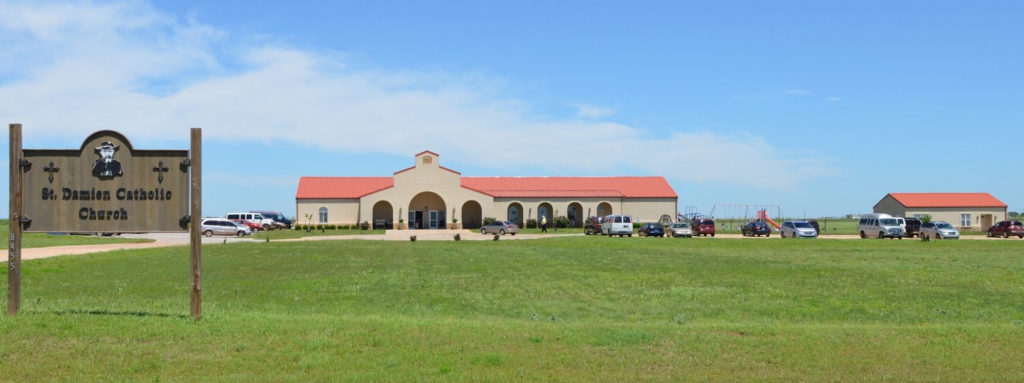
With a quick two-week notice, plans were set in motion to accommodate the Confirmation candidates, their sponsors and their parents in a space that had been reduced by half. Normally, a full church and a large indoor reception would follow, but this year, the good Lord would provide a perfect early summer evening, and on June 2nd, 2020, an excited group of 23 candidates were presented to His Excellency Paul Coakley to receive the Sacrament of Confirmation and to become soldiers of Jesus Christ. After the Confirmations took place, the confirmandi and their families spilled outside for pictures and a joyous reunion after having been separated since mid-March, when catechism classes were abruptly halted.

Confirmation season in the Oklahoma City Diocese keeps Archbishop Coakley busy every day during the spring, but with the church shutdowns this year, Confirmations were completely backed up. Confirmation catechist Terry Lyhane spoke with the Archbishop about this and found out that His Excellency had been able to administer the sacrament at his own Cathedral parish two days before and said that St. Damien’s was the second and the last Confirmation he would do this season, since he was just unable to go to the others due to the scheduling difficulties. He was giving the parish priests the permission to administer the sacrament in those parishes. St. Damien’s was deeply touched that His Excellency was able to do this for our parish, and as one of the attendees said to His Excellency, “The children have been waiting for this – they have been waiting for you.”
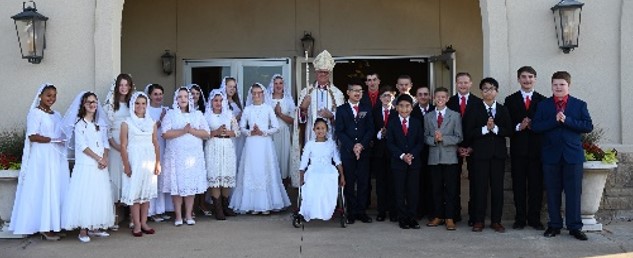
To take the sting out of not being able to have the usual refreshments, the confirmandi were treated to their very own “take-out” boxes of cupcakes, and each of them was presented with a plaque with their picture, along with a picture and short bio of their chosen patron saint.
The festive atmosphere continued through the first week of June, as a total of 17 children, who had been waiting for their Lord in the Holy Eucharist, were able to receive their first Holy Communion on Friday and Saturday, June 5th and 6th, 2020. First Communion Catechist Mrs. Janel Apel said, “it was very beautiful and such a treat to be in the church.”
After weeks of parking lot and on-line Masses, St. Damien’s parishioners are overjoyed to be back “in the church.” Father has added an extra Sunday Mass to accommodate us during this time, and the parish continues to grow with new faces every week.
St. Damien Catholic Church invites all those who are in the vicinity or just passing through to join us for daily and Sunday Mass at our location on 8455 NW 234th Street, Edmond, Oklahoma 73025. More information on the church can be found at www.saintdamiens.org.
July 16, 2020

NCRegister Interview with Fr. Killackey
Fr. John Killackey, FSSP of our Mater Dei apostolate in Harrisburg, PA was interviewed by the National Catholic Register after a photo of him in the rain was widely shared on social media.
“I would say to be a Catholic priest is to be another Christ, or just to try to be another Christ, at least as best as you’re able to, and in whatever circumstances God sends to you……So we live for Christ, and we try to bring him to other people. And that’s what the priest tries to do. His labor is for Christ and to do what he can to bring him to other people in all moments of life.”
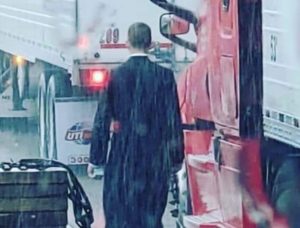
The Missive interviewed Fr. Killackey this past February about his Path to the Priesthood.
July 15, 2020

Subseasons of the Time After Pentecost
With one stark exception, the liturgical seasons of the Roman Rite generally last from 2 to 6 weeks.
And this time frame certainly makes psychological sense. As any retail store marketer will tell you, it’s hard to keep people’s interest levels up without seasonality.
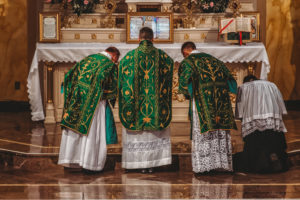 So what then are we to make of this long season after Pentecost…which grinds along in liturgical green for 24+ weeks–fully half the year?
So what then are we to make of this long season after Pentecost…which grinds along in liturgical green for 24+ weeks–fully half the year?
The key is seeing the seasonality within the season, the way Gaudete and Laetare Sundays sprinkle some joy into the prayerful watchfulness of Advent and the austere penance of Lent. And the way Passiontide gives a keener focus and renewed spirit to the end of Lent.
The Time after Pentecost was not always so uniformly defined or named. During the Carolingian Period, as we find in Alcuin’s writings, it was carved up into various subseasons pegged to the major feasts within it:
Post Pentecosten (after Pentecost)
Post Natale Apostolorum (after the birthday of the Apostles, from June 29th)
Post Sancti Laurentii (after St. Lawrence, from August 10th)
September (of the seventh month)
Post Sancti Angeli (after the holy angels, from Michaelmas on Sept. 29 to Advent)
In some places this general scheme lasted throughout the medieval period, with regional variations depending on which saints were especially honored in the area.
The Missal of Pius V did not adopt any of these named subseasons. Yet we can still detect some shifts in tone and emphasis from Pentecost to Advent, particularly when we also consider the readings from Matins in the Divine Office–the other half of the sacred liturgy.
As Dom Gueranger observed, the two objects presented to our consideration in the Time after Pentecost are “the Church and the Christian soul.” And they are presented with a certain flow that makes logical sense.
During the month of July, the Divine Office closely follows the Missal in keeping the ”Sundays after Pentecost” up until the Eleventh Sunday. And Matins during this period highlights the historical books: Josue, Judges, Ruth, and Kings—which give us a chance to contemplate how the history of the Jews foreshadows the growth of the Church after Pentecost.
But during August the readings in Matins no longer follow the Mass pattern of Sundays After Pentecost. They now switch to a monthly cycle: First Sunday in August, Second Sunday in August, etc., then First Sunday in September, and so on. (This monthly pattern will continue all the way to Advent, with different books of the Old Testament read during the weeks and months.) August also sees a shift away from the historical growth of the Church and towards the personal growth of the soul. The Matins readings are now taken up with the Sapiential or Wisdom books: Proverbs, Ecclesiastes, Wisdom, and Ecclesiasticus. In this period of late summer, roughly corresponding with the Missal’s 12th through 17th Sundays of Pentecost, we are in the fullest, most lush growth of the “green” time after Pentecost. The Mass texts continue to sound a consistent theme of right living.
But September brings another subtle shift. Gueranger sees this subseason as a practical application of August’s exhortations to wisdom: “Supernatural truth produces holiness, which cannot exist, nor produce fruit, where truth is not. In order to express the union there is between these two, the Church reads to us, during the month of September, the Books called Hagiographic; these are, Tobias, Judith, Esther, and Job, and they show Wisdom in action.” And note from these books how we are starting to see a more ominous tone creep into our consideration. The Scriptures cast us in with the Jews who face a series of threats to their very existence, whether from internal temptation as with Job, or from external enemies as with Judith and Esther.
This tendency becomes even more pronounced in the following month. Back to Gueranger again: “At the end of the world, the Church will have to go through combats of unusual fierceness. To keep us on the watch, she reads to us, during the month of October, the Book of Maccabees.” The Mass Introits have been drawing from the Psalms all year up till now, but beginning with the 18th Sunday after Pentecost, they draw from the Old Testament. Instead of prayers for assistance to live a righteous life, we see more prayers for peace, mercy, and deliverance from tribulation. We also see more Gospels that talk about the end of the world, and the tone begins to get more apocalyptic.
Finally we arrive at the Last Sundays after Pentecost—an unusual subseason that might seem to consist largely of liturgical filler: the intercalated Sundays. Though their readings are from the post-Epiphany Masses, however, it would be wrong to simply regard this time as a “catch-up” period without a distinct character of its own. In Gueranger’s words: “The near approach of the general judgment, and the terrible state of the world during the period immediately preceding that final consummation of time, is the very soul of the Liturgy during these last Sundays of the Church’s Year”. The Introit Dicit Dominus and the De Profundis at the Offertory are like an insistent drumbeat announcing the end of time. At Matins the readings are, appropriately, warnings from the Prophets: Ezekiel, Daniel, Hosea, and Micah.
We have thus reached the end of the liturgical year, and we have seen the whole history of the Church presented sequentially: birth at the Pentecost Octave, growth and maturity during August, the triumph of the saints during September, steadfastness in the face of persecution and oppression in October, and the end of the world in November.
So notwithstanding the invariant green vestments, the sacred liturgy presents different mysteries to us during summer and autumn, and following its lead will help us strengthen our endurance on earth and prepare for life in heaven.

The Apparitions of St. Kateri Tekakwitha
Extracted from the original account by Father Pierre Cholenec, from his Life of Katherine Tekakwitha (1696), one of the sources consulted in the canonization process. Cholenec was one of St. Kateri’s earliest biographers, along with Father Claude Chauchetiere who was her confessor and who reported the first appearance.
…
“Having spoken until now of Katharine’s life and death, we shall consider some apparitions that concern her, and of the extraordinary favors that several people obtained from heaven and receive daily in Canada through her intercession.” . . .
“The sixth day after Katharine’s death, that is to say, the Monday after Easter, a person of virtue and worthy of belief was praying at four o’clock in the morning, when Katharine appeared to him surrounded by glory, with majestic bearing and shining face lifted toward heaven as if in ecstasy. This marvelous vision was accompanied by three circumstances that made it seem more remarkable. In the first place, the vision lasted for two whole hours, during which this person could contemplate her at leisure and did so with a joy and a pleasure difficult to express, Katharine wishing by so marked a favor to acknowledge the great service she had received from him during her lifetime. Moreover this same apparition was accompanied by several prophecies, and by as many symbols which might be seen on both sides of Katharine in her ecstasy. Some of these prophecies have already been fulfilled, while others have not yet come to pass. . . .
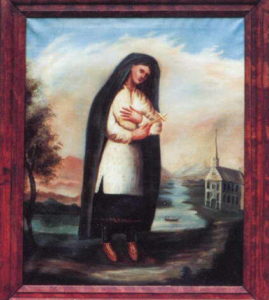
In the following year, 1681, on the first of September, and in 1682, on the twenty-first of April, this same person had a similar vision under the same circumstances, with this one difference, that in the first apparition he had seen Katharine as a rising sun, and had heard these words: Adhuc veni in dies, whereas in the two following he saw her as a sun in mid-heaven with these words: Inspice et fac secundum exemplar (Exod. 25:20), God thus making it known that He wished pictures to be painted of Katharine. For a long time we had refrained from doing so, but when they were painted later on they contributed a great deal toward making Katharine known, for, being placed on the heads of the sick, they brought about marvelous cures.
Two days after the first of these apparitions, Katharine appeared to the good Anastasia in the following manner.
This fervent Christian woman remained alone in prayer that night after the others of her lodge had gone to bed. Feeling herself overcome by sleep, she finally lay down on her mat to rest, but no sooner had she closed her eyes than she was awakened by a voice which called her with these words: “Mother, arise.” She recognized Katharine’s voice. Far from having any fear, she immediately raised herself into a sitting position, and turning to the place whence the voice came, she saw Katharine standing beside her, brilliant with light. Half her body was engulfed in this brightness, and the upper part was as bright as the sun. She carried a cross in her hand which was more brilliant than everything else, and from it there shone forth so much light that she thought there could be nothing more beautiful upon earth.
“I saw her,” she insisted, “in this position clearly, awake as I was, and I heard these words very distinctly: ‘Mother, look at this cross and see how beautiful it is. It was the source of all my happiness during my life, and I counsel you to make it yours also.’” After these few words she disappeared, leaving her mother overjoyed and with a spirit so filled with this vision that after many years her memory of it is as fresh as it was the first day.”
July 14, 2020

Lectures on Genesis by Fr. Dominic Savoie, FSSP
“An error in the beginning is an error indeed.” –St. Thomas Aquinas
Join Fr. Dominic Savoie, FSSP for a deep dive into the first chapters of Genesis using literary forms, Scriptural cross-references, Patristic commentaries, and works of art. In a refreshingly Catholic and scholarly manner, Fr. Savoie treats this difficult text with the humble respect it deserves, uncovering the imagery behind the words by careful consideration of how these passages have been understood and interpreted for the two millennia that the Bible was handed down.
All these lectures and even more great content are available on the FSSP Sacramento Youtube channel.
July 13, 2020

Afonso I: the Constantine of the Congo
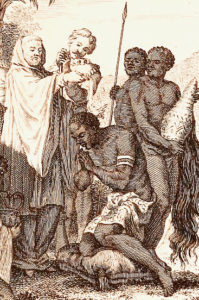 On June 4th, in the year of Our Lord 1491, a Congolese Prince named Nzinga Mbemba was baptized by Portuguese missionaries, taking the name of Afonso.
On June 4th, in the year of Our Lord 1491, a Congolese Prince named Nzinga Mbemba was baptized by Portuguese missionaries, taking the name of Afonso.
By 1509, his father the King of Kongo had died, touching off a war for succession that fractured the kingdom along a religious fault line. On the one side was the Catholic Afonso, and on the other his pagan half-brother Mpanzu a Kitima.
The two rivals met in a decisive battle at the capital of Mbanza Kongo, and what happened next is the stuff of Catholic legend. According to Afonso’s own account, his vastly outnumbered army appealed to St. James for assistance. The great Apostle then miraculously appeared in the sky along with five heavenly swordsmen, and the sight so frightened the pagans that their superior force broke and abandoned the field.
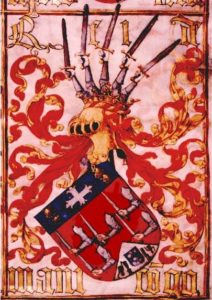 Afonso thus succeeded his father as Manicongo. Bolstered in his convictions by a wondrous act of divine aid, this Constantine of West-Central Africa did everything he could to shift the kingdom away from its traditional paganism and toward the Catholic religion. To commemorate his victory, he devised a coat of arms emblazoned with five sword-arms, the scallops of St. James, and broken idols. He made the feast of St. James a national holiday. He established Catholicism as the state religion of the Kongo, declared the worship of idols illegal, and burned a pagan temple. He encouraged the founding of confraternities, as well as missionary schools that instructed the Congolese aristocracy in Christian doctrine and in Latin. His son was even ordained a bishop by Pope Leo X. Afonso did so much to advance the Catholic faith during his reign that a contemporary Portuguese historian dubbed him “the Apostle of Congo.”
Afonso thus succeeded his father as Manicongo. Bolstered in his convictions by a wondrous act of divine aid, this Constantine of West-Central Africa did everything he could to shift the kingdom away from its traditional paganism and toward the Catholic religion. To commemorate his victory, he devised a coat of arms emblazoned with five sword-arms, the scallops of St. James, and broken idols. He made the feast of St. James a national holiday. He established Catholicism as the state religion of the Kongo, declared the worship of idols illegal, and burned a pagan temple. He encouraged the founding of confraternities, as well as missionary schools that instructed the Congolese aristocracy in Christian doctrine and in Latin. His son was even ordained a bishop by Pope Leo X. Afonso did so much to advance the Catholic faith during his reign that a contemporary Portuguese historian dubbed him “the Apostle of Congo.”
Historians have long debated the extent to which the Kingdom of Kongo was actually Christianized during this period–and even whether Afonso’s own faith was as sincere as he portrays. But this is nothing new. Historians ask the same questions of Constantine and, really, any leader who throws his political weight behind the Church.
But one testament to the sincerity of Afonso’s faith was his apparent willingness to cling to its tenets even as relations deteriorated with those who had first brought it. For as it happened, some of those very people who ostensibly came to preach Christ crucified were enticed to follow Mammon instead.
Slavery had existed from time immemorial in the Congo, mainly consisting of criminals and prisoners of war condemned to serve in aristocratic households. But the growth of an international market for slaves, and the massive profits it generated, pushed many Portuguese and Congolese away from a low-key domestic model toward what one historian has called “a mercantile economy based on chattel slavery and ruthless greed.”
Afonso grew increasingly alarmed about the insidious and illegal trafficking of his subjects, and in 1526, he wrote an impassioned letter to John III of Portugal–one Catholic king to another.
“Each day the traders are kidnapping our people – children of this country, sons of our nobles and vassals, even people of our own family. This corruption and depravity are so widespread that our land is entirely depopulated. We need in this kingdom only priests and schoolteachers, and no merchandise, unless it is wine and flour for Mass.“
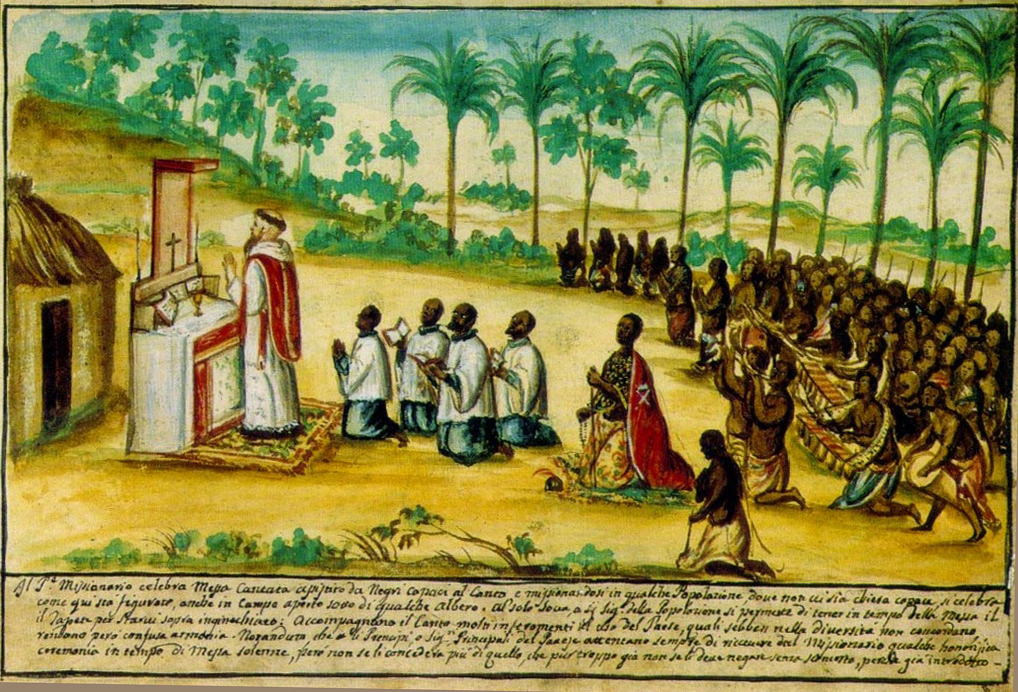
He told the Portuguese King that the slavers were “ruining our kingdom and the Christianity which has been established here for so many years and which cost your predecessors so many sacrifices.” He appealed to the king’s missionary impulse to provide “this great blessing of faith” to new peoples–and said he was anxious to preserve that faith intact in the Congo. But:
“…European goods exert such a fascination over the simple and the ignorant that they leave God in order to obtain them…The lure of profit and greed lead the people of the land to rob their compatriots, including members of their own family and of ours, without considering whether they are Christians or not. They capture them, sell them, barter them. This abuse is so great that we cannot correct it without striking hard and harder.”
From our 21st century vantage point, it is easy to posture and preen in imperious judgment of men long since dead, and to force complex historical circumstances into boilerplate soundbites and stale 19th century political theories. We conveniently imagine ourselves on the right side and hardly dare ask what fascinating merchandise and bits of modern technology we’ve traded God for.
Afonso, however, who saw the birth of the Atlantic Slave Trade before his very eyes, was not interested in cheap virtue signaling.
Whether he was defending his succession against pagan relatives or defending his kingdom against a Christian foreigner, whether he was inveighing against the hypocritical greed of Christian traders or the heartbreaking selfishness of his own people, one thing seems fairly consistent in his rhetoric: a fidelity to God’s law.
King Afonso I of Kongo died in 1542, unable to snuff out the slave trade in its infancy. In ensuing years, it would metastasize into an intercontinental nightmare that would see some 10-12 million Africans brought across the Atlantic in chains, over a million of them perishing along the way. It is not hard to imagine what the writer of those letters would have felt about the future, had he lived to see it.
 Because of the precedents Afonso established, the Kingdom of Kongo was set on a religious course that it maintained for centuries afterward. His successors were duly recognized as Catholic Monarchs by the Pope and the Royal Houses of Europe, who extended to the African nobility such European titles as Count and Duke. The kingdom would, however, continue to be beset by internal dissension and external conflict until it was weakened and finally abolished in 1914, during a decade that proved fatal to so many of the ancient monarchies of Christendom.
Because of the precedents Afonso established, the Kingdom of Kongo was set on a religious course that it maintained for centuries afterward. His successors were duly recognized as Catholic Monarchs by the Pope and the Royal Houses of Europe, who extended to the African nobility such European titles as Count and Duke. The kingdom would, however, continue to be beset by internal dissension and external conflict until it was weakened and finally abolished in 1914, during a decade that proved fatal to so many of the ancient monarchies of Christendom.
Afonso, like Constantine, is not ultimately to be judged by the miraculous events that surrounded his accession, the geopolitical situation he navigated, or even the longevity of his nation. He is to be judged–as all of us are–by one thing alone: how did he respond to the graces that God gave him?
It is not for history to answer that question. But there is good reason for the Catholics of today, particularly those descended from his subjects, to admire this loyal son of Holy Mother Church who forged an island of Christendom in the heart of the Congo.
July 10, 2020







